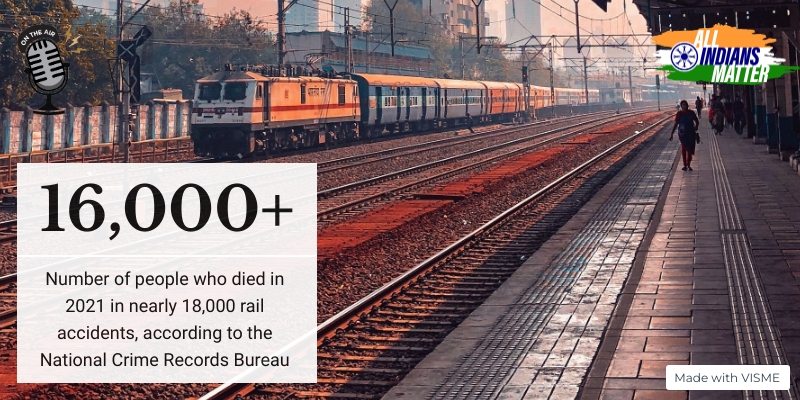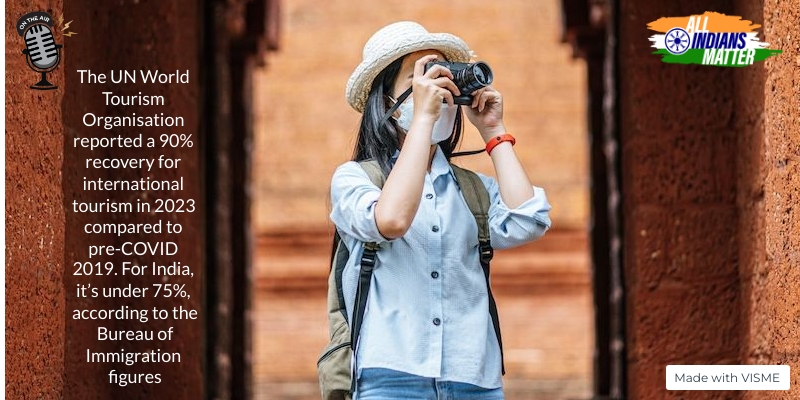Ashraf Engineer
July 1, 2023
EPISODE TRANSCRIPT
Hello and welcome to All Indians Matter. I am Ashraf Engineer.
The Indian rail network is the fourth largest in the world, transporting an estimated 23 million passengers every day. It moved 1.5 billion tons of freight in 2022. And it’s undergoing a multi-billion-dollar transformation that includes new, high-speed trains and modern stations but the monster crash at Balasore in Odisha that killed at least 288 people in early June put in perspective the railways’ priorities. Speed and aesthetics are important but shouldn’t more attention be paid to safety?
SIGNATURE TUNE
The three-train pile-up in Balasore was one of India’s worst rail disasters of the past two decades. Experts pointed out that government spending on railways has focused on speed and comfort but more needs to be done on the safety front.
The Balasore crash involved a goods train. These trains run on the same tracks as that of passenger trains, which means that the lines are often overloaded or blocked and maintainance is tough.
The government has showcased the rail transformation as proof of its commitment to infrastructure. So, this year, the government allocated a record $30 billion capital outlay for the railways, a 50% rise over the previous fiscal. The plan includes 100% electrification of the network by 2024 and a net zero deadline of 2030. The railways are also installing an anti-collision system, but so far it’s only operational on 2% of the network. Had the anti-collision technology, ‘Kavach’, been in place, the Balasore accident probably wouldn’t have happened. The crash occurred on the eastern coastal route, which is one of India’s oldest and busiest and carries much of its coal and oil freight.
The new works include also track upgrades and new trains such as the semi-high-speed Vande Bharat Express. Prime Minister Narendra Modi personally flagged off the first journeys of many new trains.
But this has been sharply contrasted by the Balasore tragedy. Initial reports said there was some sort of signal issue and concerns about such malfunctions had been raised earlier too.
The safety record may have improved but a lot more needs to be done to prevent human error and ensure proper track maintainance. After all, a number of trains have been introduced to cope with the demand but neither the workforce nor their training seems to have kept pace. The workload, say experts, is too high.
The most common form of accident seems to be derailments. According to the Comptroller and Auditor General, the network logged 2,017 accidents between 2017 and 2021. Derailments accounted for 69% of the accidents, causing 293 deaths. The report pointed to other problems such as track defects, poor maintainance, ancient signalling equipment and human error. The report added that lack of funds or non-utilisation of available funds for track restoration led to 26% of the accidents.
In February, Hari Shankar Verma, a railways manager, wrote to the government about a “serious unsafe” incident at Hosadurga Road Station in Mysore. A head-on collision had been prevented after a driver halted his train on noticing a false green signal. Verma wrote: “The incident indicates there are serious flaws in the system….” He added: “The present incident must be viewed very seriously and immediate corrective actions are required to be taken to rectify the system faults and also sensitise the staff for not venturing into shortcuts leading to major mishap.”
I must stress again that the safety performance has improved overall. The number of accidents per million train kilometres fell to 0.03 in fiscal 2021-22 from 0.10 in 2013-14. However, the upgrades have meant an increase in rail travel and thus there is a greater need for better track maintainance, and safety and signalling systems. Because this hasn’t happened fast enough, in 2021, more than 16,000 people were killed in nearly 18,000 rail accidents, according to the National Crime Records Bureau.
The vast majority of deaths were caused by people falling off trains or getting run over by them. It’s clear that the focus on safety must not stop at derailments.
In India, political fortunes are often linked to the rail network. This has led to pork-barrel projects in areas going to the polls or which need to be kept happy. The focus, therefore, has not been on safety. No wonder then that the railway budget has grown to five times the size since Modi came to power. But, most of that money has not gone to the fundamental steps needed to transport people and goods safely. Instead, it’s being spent on high-profile investments.
The government argues that it’s all part of an effort to elevate the rail experience to a world-class standard. Perhaps safety should be considered a critical part of that experience.
Thank you all for listening. Please visit allindiansmatter.in for more columns and audio podcasts. You can follow me on Twitter at @AshrafEngineer and @AllIndiansCount. Search for the All Indians Matter page on Facebook. On Instagram, the handle is @AllIndiansMatter. Email me at editor@allindiansmatter.in. Catch you again soon.






